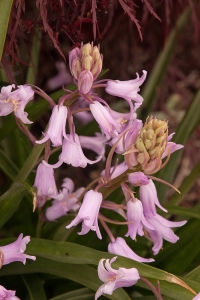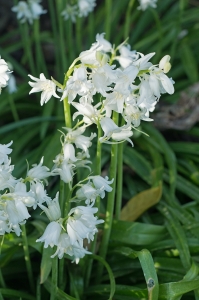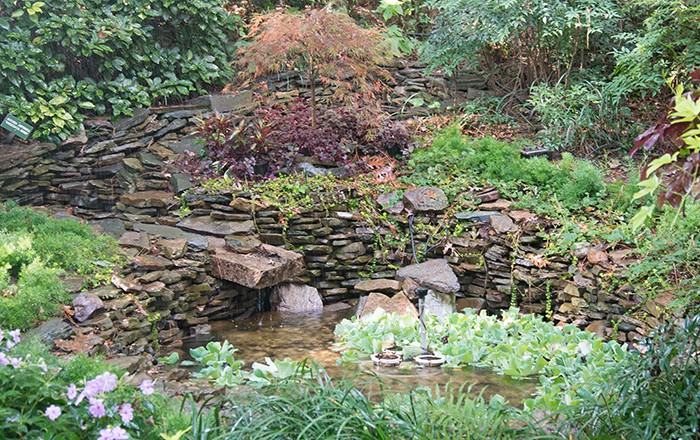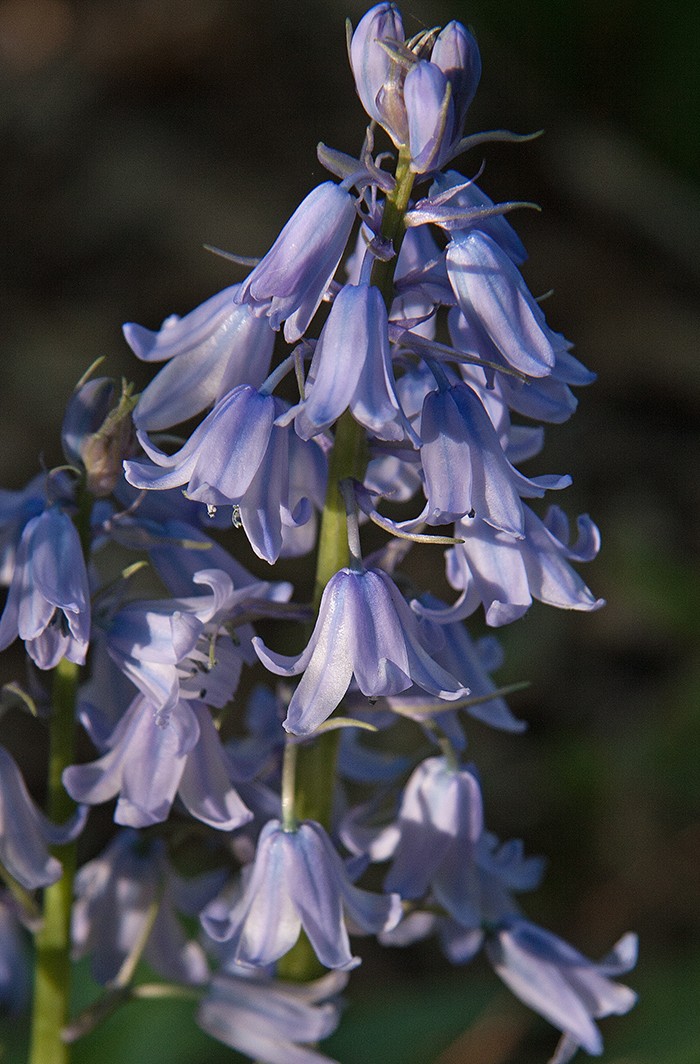When it comes to fall-planted, spring-blooming bulbs that can be relied upon to return year after year, crocuses and daffodils almost always top gardeners’ lists. But if you are looking for something different and just as dependable, Spanish bluebells (Hyacinthoides hispanica) will certainly have the same ring.

Spanish bluebells might seem like horticultural exotica — they do hail from Spain as well as Portugal — but gardeners in-the-know on this side of The Big Pond have been enjoying them since colonial times. These bulbous beauties have found our Southeast especially to their liking — so much so that they can even naturalize and begin to spread.
True to their name, these cuties hang small, bell-shaped blooms off slight stalks that top, depending on the cultivar, from 8 to 16 inches tall. Not accurate is the implication that their hue is truly blue — it’s not. The dainty little dangles are typically a light lavender with blue accents. And if you want more colorful confusion, there are even Spanish bluebell cultivars that sport pink or white flowers.

During autumn planting time, mixing Spanish bluebells with other repeat performers such as crocus and daffodils creates a low- maintenance springtime bulb bed that can stay pleasantly pretty for years. These deer-resistant lovelies actually extend the eye-candy season in such beds because they bloom later in spring after the flowers of most other bulbs have faded.
As an alternative, since Spanish bluebells are tough, drought-tolerant plants that can put up with moderate shade, they are ideal candidates to doll up nether regions under large, deciduous trees — areas where few plants flourish. Following their initial transition period after planting, chances are good that they will settle in for the long haul to the point they even begin to expand their playground by way of seeds and offshoot bulbs.
The plants go dormant by early summer, and their strap-like foliage dies back. At this time, you can tidy up by cutting the yellowed leaves off and discarding them.
In spite of their European origins, Spanish bluebell bulbs aren’t hard to find at this time of year. They have become traditional Southern pass-along plants and are common October offerings in garden centers. As for online shopping, two quality regional nurseries with good selections to check out are Brent and Becky’s Bulbs (brentandbeckysbulbs.com) and Terra Ceia Farms (terraceiafarms.com).

Water garden
After autumn’s leaf fall, clean the water garden, but don’t be too thorough. Leaves, sticks and other debris can be removed, along with replacing about 20 percent of the existing water with fresh H2O, but a full-blown draining and washing can drastically cut down on beneficial microorganisms that have built up in the pond, which would damage the biological balance that makes your backyard pond work so well as an enclosed ecosystem.
To Do in the Garden
October
- Plant flower seeds in the fall? Sure, especially if they are hardy annuals and biennials such as bells of Ireland, cornflower, foxglove, Johnny jump-ups, larkspur, lunaria, snapdragons, sweet peas, sweet alyssum and Virginia stock that actually need the cold of winter to properly develop in time for next spring.
- If it is autumn, it must be pansy planting time. Be sure to spread a time-release fertilizer throughout the planting bed to give these cold-weather beauties the nutrients necessary for their extended flower show, which can last well into next spring.
- Any herbaceous perennials that were planted this year should be marked with an ID stake before they die back, so they won’t be accidentally dug up during next year’s annual spring planting frenzy.
- Grass clippings and autumn leaves are great ingredients for starting a compost pile, so take advantage of the seasonal abundance of organic materials and start your own heap of “black gold” for the garden.
- Newly seeded lawns should be raked weekly to prevent leaves from smothering tender new grass shoots.
- Pumpkins and winter squash will store better if they are harvested with a few inches of stem still intact.







